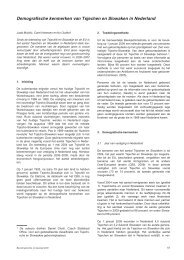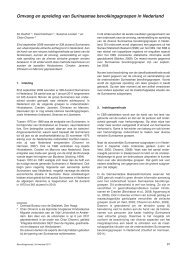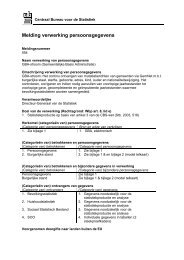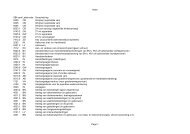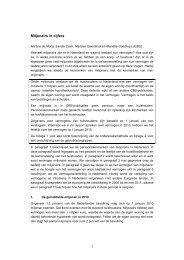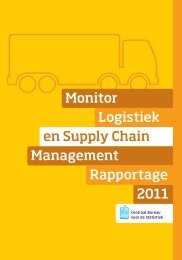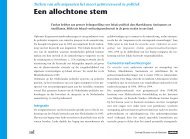Internationalisation monitor 2012 - CBS
Internationalisation monitor 2012 - CBS
Internationalisation monitor 2012 - CBS
You also want an ePaper? Increase the reach of your titles
YUMPU automatically turns print PDFs into web optimized ePapers that Google loves.
12 Statistics Netherlands<br />
• secondly, they illustrate the consequences of these trends and developments for<br />
employment, economic growth and enterprise performance based on combining<br />
micro-data on enterprises;<br />
• and finally they facilitate a well-balanced and factual debate on globalisation and its<br />
socio-economic consequences for the Netherlands.<br />
Section 1.2 illustrates the statistical challenges and innovations that were necessary<br />
to describe a complex and vast phenomenon as globalisation. The main findings and<br />
conclusions of this publication are illustrated in section 1.3. Section 1.4 describes the<br />
structure of this <strong>Internationalisation</strong> Monitor. This introduction is concluded with a<br />
paragraph on further developments and plans with respect to studies on internationalisation<br />
at <strong>CBS</strong>.<br />
Measuring internationalisation: statistical innovation<br />
To be able to say something about globalisation and its consequences for the Dutch<br />
economy, enterprises and employees is a relatively new and great challenge for statistical<br />
authorities. Due to the interdependency of many economic dimensions, traditional<br />
statistical concepts and frameworks – for instance systems of national accounts or balance<br />
of payments principles – are increasingly difficult to construct. In addition, the complexity<br />
of the activities of (multi)national enterprises in and outside the Netherlands makes<br />
integrating statistics of such developments a vital function of statistical agencies. While<br />
restricted to a national mandate, it also is a great challenge to confront and integrate the<br />
many dimensions and effects of globalisation in such a way that justifies the intrinsic and<br />
methodological nuances of the individual indicators as well as the interconnectedness of<br />
the dimensions.<br />
Statistical agencies have an obligation and a responsibility to prevent that, based on their<br />
data and analyses, partial or incorrect conclusions are drawn. In order to ensure a correct<br />
interpretation of the trends and analyses, each chapter provides a clear overview of which<br />
data is used, which limitations we encountered and which methods and empirical tools<br />
were implemented. As such, each table, statistic and analysis is presented within a context,<br />
in order to provide our findings in a well-balanced and exhaustive manner.<br />
A key way to develop new indicators and analyses on globalisation is by integrating<br />
micro-data from various sources (surveys and registers) available at <strong>CBS</strong>. Data on international<br />
trade in goods, combined with information from the general business register<br />
(enterprise population) and supplemented with data on employment allowed us to<br />
explore some of the social consequences of globalisation in the <strong>monitor</strong> of last year. This<br />
year, we integrated information from the General Business Register with International<br />
Trade in goods, Foreign Affiliate statistics (FATS) in order to investigate the demography<br />
of the Dutch enterprise population, the dynamics in this population and the determinants<br />
and consequences of such dynamics for the economy.





